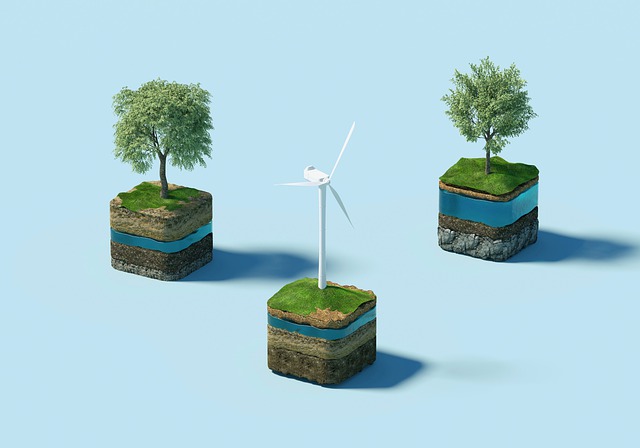In the article “The Role of Green Infrastructure in Sustainable Development,” you will learn about the benefits and resources available when it comes to managing stormwater through green infrastructure. Green infrastructure allows water to infiltrate the ground or capture it for later reuse. New Jersey Future offers a variety of resources to help understand, fund, and implement green infrastructure projects. They provide tools like the Green Infrastructure Municipal Toolkit for cities and towns to plan and implement these projects, as well as the Developers Green Infrastructure Guide 2.0 for developers and decision-makers.
They also offer case studies, planning and design resources, and operations and maintenance guidance. Decision-making is also covered, including costs and benefits, funding sources and tools, and the triple-bottom line benefits of green infrastructure. The resources even extend to green infrastructure in parks and green streets. If you’re interested in getting an overview of green infrastructure or seeing successful projects, there are videos available as well. New Jersey Future, a nonprofit organization focused on smart growth and sustainable development in New Jersey, is the source of all these valuable resources.
The Role of Green Infrastructure in Sustainable Development

Introduction to Green Infrastructure
Green Infrastructure is an innovative approach to managing stormwater runoff that aims to mimic natural systems and reduce the impact of urbanization on the environment. It consists of a network of practices and technologies that can either enable water to infiltrate the ground or capture it for later reuse.
Benefits of Green Infrastructure
The use of Green Infrastructure offers numerous benefits for both the environment and communities. Firstly, it helps to reduce stormwater runoff by capturing and storing rainfall, thereby preventing it from overwhelming sewer systems and causing flooding. This is crucial in urban areas where impervious surfaces, such as roads and buildings, contribute to excessive runoff.
Moreover, Green Infrastructure helps improve water quality by filtering pollutants and sediments from stormwater before it enters natural water bodies. It also helps replenish groundwater supplies by allowing water to infiltrate into the soil, thus sustaining local ecosystems.
Additionally, Green Infrastructure contributes to the creation of more livable and attractive communities. By incorporating green spaces into urban areas, it enhances residents’ quality of life by providing recreational opportunities, improving air quality, and reducing the urban heat island effect.

Green Infrastructure for Stormwater Management
Green Infrastructure plays a crucial role in stormwater management. Traditional stormwater management methods often involve collecting and channeling runoff directly into sewer systems, leading to overwhelmed infrastructure and high maintenance costs. Green Infrastructure works in conjunction with traditional “gray” infrastructure to reduce stormwater volume and improve its quality.
Rain gardens, bioswales, green roofs, and permeable pavements are just a few examples of Green Infrastructure practices that can be implemented to manage stormwater. These practices help to slow down the flow of water, filter out pollutants, and allow for infiltration or controlled release of stormwater.
Green Infrastructure in Urban Planning
Incorporating Green Infrastructure into urban planning is essential for creating sustainable and resilient cities. By integrating natural elements into the built environment, cities can better manage stormwater, reduce urban heat island effect, and promote biodiversity.
The Green Infrastructure Municipal Toolkit, developed by New Jersey Future, provides valuable information and tools for cities and towns to plan and implement green infrastructure projects. It covers topics such as land use planning, regulatory strategies, design guidelines, and community engagement. By following these guidelines, local governments can effectively integrate Green Infrastructure into their planning processes.

Resources for Understanding Green Infrastructure
New Jersey Future offers a wide range of resources to help individuals and organizations understand and implement Green Infrastructure. The organization’s website features numerous guides, reports, case studies, and videos that provide insights into the various aspects of Green Infrastructure.
The “Developers Green Infrastructure Guide 2.0” is a valuable resource for developers and decision-makers looking to incorporate Green Infrastructure options into their projects. It offers guidance on designing, constructing, and maintaining green infrastructure practices, as well as information on the associated costs, benefits, and incentives.
Funding and Implementing Green Infrastructure Projects
One of the main challenges in implementing Green Infrastructure projects is securing funding. To address this issue, New Jersey Future provides resources that outline potential funding sources for Green Infrastructure projects and offers guidance on navigating the funding process.
Furthermore, the organization offers practical advice on implementing Green Infrastructure projects, including strategies for overcoming barriers and engaging stakeholders. By sharing best practices and lessons learned from successful projects, New Jersey Future aims to facilitate the widespread adoption of Green Infrastructure across the state.
Planning and Design Resources for Green Infrastructure
The successful implementation of Green Infrastructure projects relies heavily on effective planning and design. New Jersey Future provides planning and design resources that cover topics such as site selection, hydrologic analysis, and green infrastructure design techniques.
The organization’s resources also highlight the importance of incorporating community input into the planning process. By involving stakeholders from the beginning, cities and towns can ensure that Green Infrastructure projects meet the needs and priorities of their communities.
Operations and Maintenance of Green Infrastructure
Proper maintenance of Green Infrastructure practices is crucial to ensure their long-term effectiveness. New Jersey Future offers resources that provide guidance on the operations and maintenance of various Green Infrastructure practices, including rain gardens, bioswales, and green roofs.
By following recommended maintenance practices, communities can ensure that Green Infrastructure continues to function properly and deliver the desired environmental and social benefits.
Case Studies and Success Stories
New Jersey Future has compiled an extensive collection of case studies and success stories that showcase the positive impacts of Green Infrastructure throughout the state. These case studies highlight the different types of projects, their challenges and achievements, and the lessons learned from their implementation.
The organization also provides videos that showcase successful Green Infrastructure projects and provide an overview of the concept. These videos serve as valuable educational tools and inspire communities to explore the potential of Green Infrastructure in their own areas.
In conclusion, Green Infrastructure has a vital role to play in sustainable development. It offers a range of benefits, including improved stormwater management, enhanced water quality, and the creation of more livable communities. New Jersey Future’s resources provide valuable information and tools for understanding, funding, and implementing Green Infrastructure projects. By utilizing these resources, developers, decision-makers, and individuals can contribute to the transformation of urban areas into sustainable and resilient environments.



